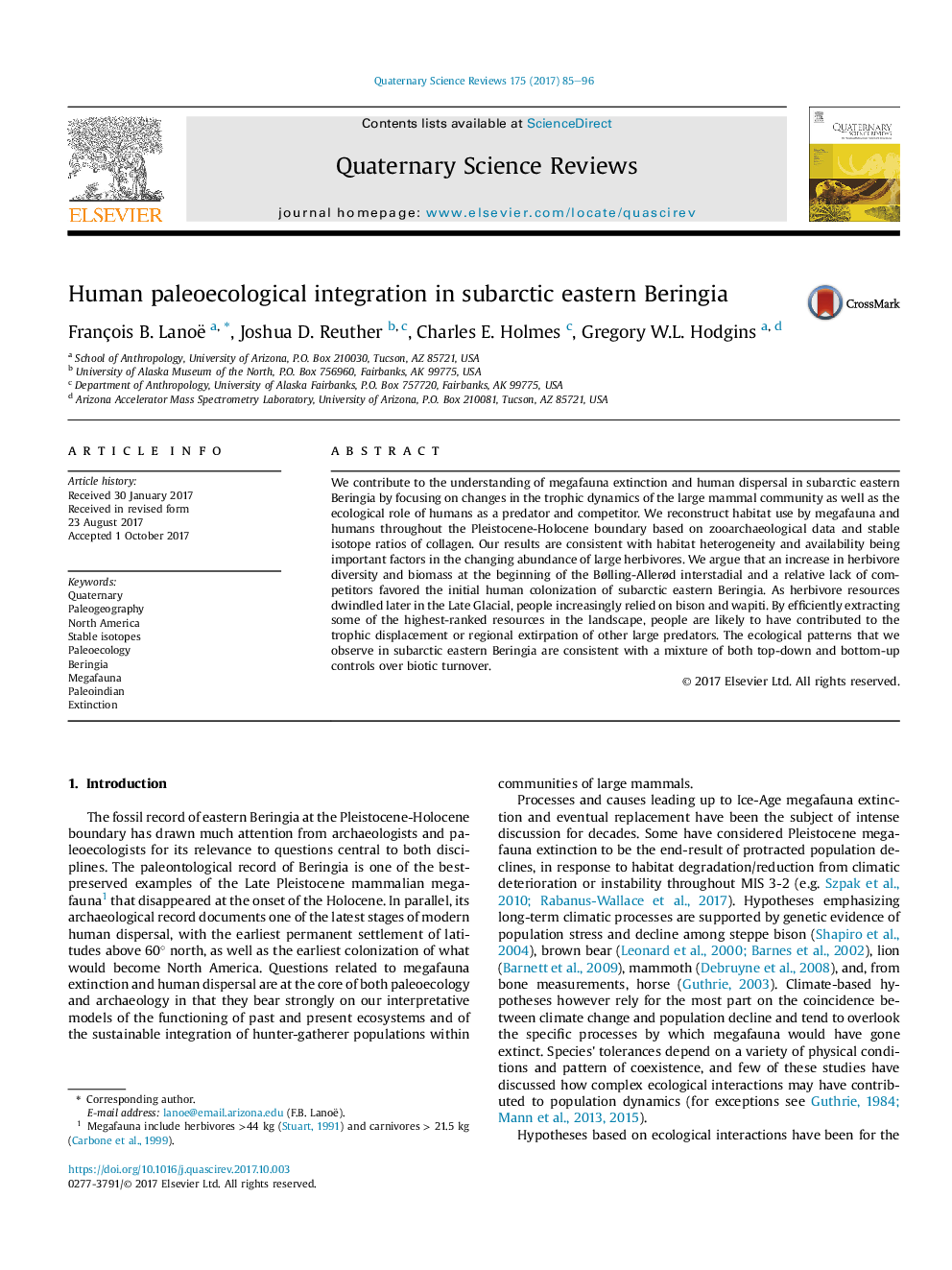| Article ID | Journal | Published Year | Pages | File Type |
|---|---|---|---|---|
| 5786526 | Quaternary Science Reviews | 2017 | 12 Pages |
Abstract
We contribute to the understanding of megafauna extinction and human dispersal in subarctic eastern Beringia by focusing on changes in the trophic dynamics of the large mammal community as well as the ecological role of humans as a predator and competitor. We reconstruct habitat use by megafauna and humans throughout the Pleistocene-Holocene boundary based on zooarchaeological data and stable isotope ratios of collagen. Our results are consistent with habitat heterogeneity and availability being important factors in the changing abundance of large herbivores. We argue that an increase in herbivore diversity and biomass at the beginning of the Bølling-Allerød interstadial and a relative lack of competitors favored the initial human colonization of subarctic eastern Beringia. As herbivore resources dwindled later in the Late Glacial, people increasingly relied on bison and wapiti. By efficiently extracting some of the highest-ranked resources in the landscape, people are likely to have contributed to the trophic displacement or regional extirpation of other large predators. The ecological patterns that we observe in subarctic eastern Beringia are consistent with a mixture of both top-down and bottom-up controls over biotic turnover.
Keywords
Related Topics
Physical Sciences and Engineering
Earth and Planetary Sciences
Geology
Authors
François B. Lanoë, Joshua D. Reuther, Charles E. Holmes, Gregory W.L. Hodgins,
